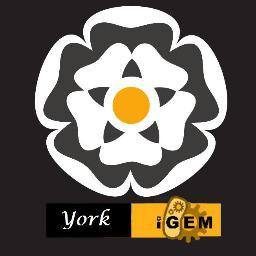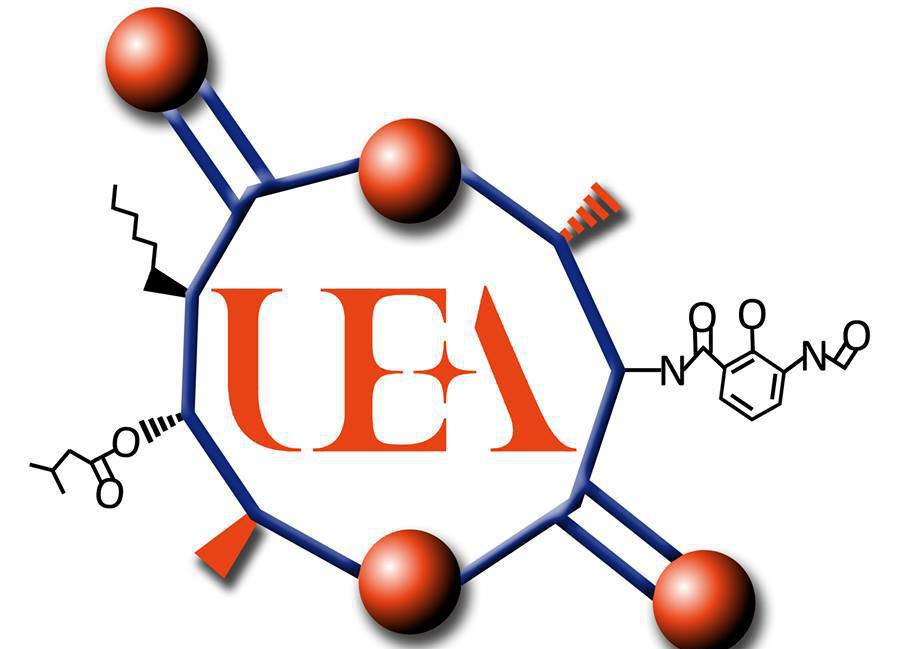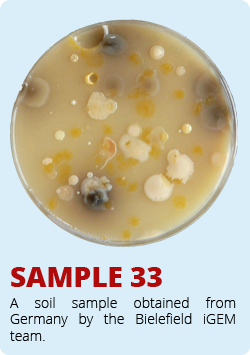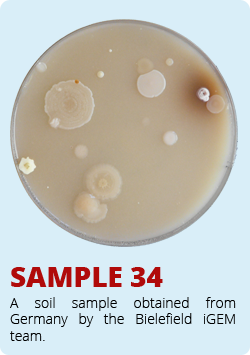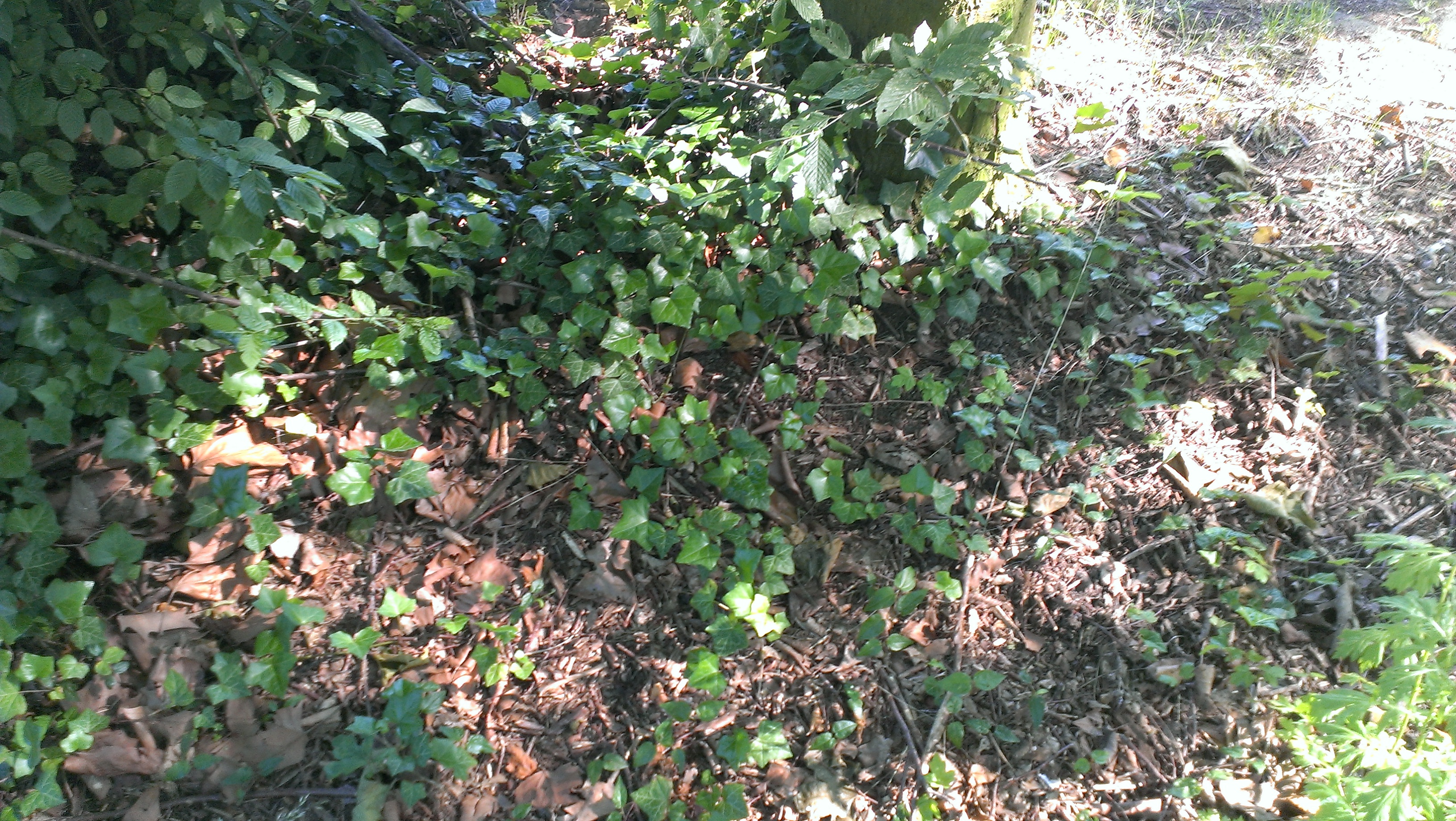Team:Bielefeld-Germany/Collaborations
From 2013.igem.org
| Line 101: | Line 101: | ||
</p> | </p> | ||
| + | |||
| + | <p align="justify"> | ||
The iGEM-Team UC-Davis 2013 wants to develop and implement an experimental data depot for biobrick characterization data and kindly asked us to collaborate with them. We tested their promoter characterization protocols on the | The iGEM-Team UC-Davis 2013 wants to develop and implement an experimental data depot for biobrick characterization data and kindly asked us to collaborate with them. We tested their promoter characterization protocols on the | ||
| - | [http://parts.igem.org/Promoters/Catalog/Anderson Anderson promoter collection] J230100-J230119. | + | [http://parts.igem.org/Promoters/Catalog/Anderson Anderson promoter collection] J230100-J230119. The plasmid backbone of these biobricks J61002 is very suitable for promoter insertion between the XbaI and SpeI sites, which places the promoter upstream of a red fluorescent protein (RFP)gene. Through the promoter, RFP is expressed more frequently or less, while the promoter strength can easily be characterized via fluorescence measurements. |
| + | <br> | ||
| + | <br> | ||
<br> | <br> | ||
Our team focused mainly on the second half of the collection, which comprises promoters with the below listed strengths. | Our team focused mainly on the second half of the collection, which comprises promoters with the below listed strengths. | ||
| - | + | </p> | |
| + | <div align="center"> | ||
{| class="wikitable" style="text-align:center" border="0" cellpadding="5" cellspacing="0" align="center" | {| class="wikitable" style="text-align:center" border="0" cellpadding="5" cellspacing="0" align="center" | ||
!Biobrick number | !Biobrick number | ||
| Line 147: | Line 152: | ||
|} | |} | ||
| + | </div> | ||
<p align="justify"> | <p align="justify"> | ||
We carried out an extended, 18-hour experiment, monitoring cell density through absorbance measurement and promoter strength by way of fluorescence emission. The results are shown subsequently. | We carried out an extended, 18-hour experiment, monitoring cell density through absorbance measurement and promoter strength by way of fluorescence emission. The results are shown subsequently. | ||
Revision as of 18:01, 3 October 2013
Collaborations
Abstract
Beside the research into the project it is important to collaborate with other iGEM teams to support them. This support can be carried out in different ways, for example an exchange via a skype interview or characterize the other part of the other team. In the following description we list our collaborations between us and other teams.
iGEM-Team York_UK
Because of the fact that both teams do research into microbial fuel cells we get in touch and talked about our projects. We get to know that York had problems with cloning the mtrCAB cluster and invested a lot of time to solve this problems. Because of the fact that time was running we decided to help York. We already designed our MFC and tested different constructions which one is the best to use. We constructed a MFC specially adapted to the requirements of York and wrote an instruction how to operate with the MFC. In addition we put nafion membranes, gaskets, carbon electrodes and injectors into a package and send it to York. We hope that this support helped York to generate good results and finish their project.
iGEM-Team NRP-UEA-Norwich
The iGEM-Team from Norwich developed a biosensor which enable the identification of antimycin-producing strains of streptomyctes. Therefore they asked us to send them soil samples from Bielefeld. Of course we took samples of soil and send them to Norwich. The interesting soil samples of Bielefeld are shown below. We hope that our soil samples helped Norwich.
iGEM-Team UC Davis
The iGEM-Team UC-Davis 2013 wants to develop and implement an experimental data depot for biobrick characterization data and kindly asked us to collaborate with them. We tested their promoter characterization protocols on the
[http://parts.igem.org/Promoters/Catalog/Anderson Anderson promoter collection] J230100-J230119. The plasmid backbone of these biobricks J61002 is very suitable for promoter insertion between the XbaI and SpeI sites, which places the promoter upstream of a red fluorescent protein (RFP)gene. Through the promoter, RFP is expressed more frequently or less, while the promoter strength can easily be characterized via fluorescence measurements.
Our team focused mainly on the second half of the collection, which comprises promoters with the below listed strengths.
| Biobrick number | Measured relative promoter strength |
|---|---|
| BBa_J23119 | n/a |
| BBa_J23101 | 0.7 |
| BBa_J2308 | 0.51 |
| BBa_J2309 | 0.04 |
| BBa_J23111 | 0.58 |
| BBa_J23112 | 0.00 |
| BBa_J23113 | 0.01 |
| BBa_J23114 | 0.10 |
| BBa_J23115 | 0.15 |
| BBa_J23116 | 0.16 |
| BBa_J23117 | 0.06 |
| BBa_J23118 | 0.56 |
We carried out an extended, 18-hour experiment, monitoring cell density through absorbance measurement and promoter strength by way of fluorescence emission. The results are shown subsequently.
Please note that we monitored the optical density at 700 nm wavelength, because the UC-Davis team was concerned about interferences of OD600 measurements with the fluorescence measurements.
To determine the relative strength of the used promoters we looked at the fluorescence signal of RFP. With increasing promoter strength, transcription should be enhanced and more RFP will be expressed. This results in a higher fluorescence signal.
 "
"

